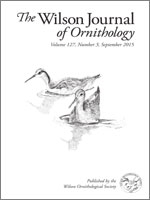We surveyed five reed habitats (mining pond, sand pit, large canal, small canal, and lowland river) in north-western Vojvodina (Serbia) between 2009–2011 to study habitat use and to estimate nesting success in an understudied region of the breeding range of the Great Reed Warbler (Acrocephalus arundinaceus). Data from 174 nests showed that habitat use differed considerably between habitat types but was not related to the area of the study site or the reed bed. Higher than expected numbers of nests along the small canal and the river suggested that Great Reed Warblers preferred these to other habitats for nesting. Habitat use was closely linked to the availability of reed edges and the quality of the reed stand. Overall Mayfield nesting success was 43%, slightly lower than in northern and western Europe. Nesting success was low along the small and large canal, where brood parasitism by Common Cuckoos (Cuculus canorus) and nest predation were high because of the nearby presence of tree lines that provided perching sites for cuckoos and predators. Nesting success was intermediate at the mining pond because of high predation pressure and adverse weather, and nesting success was highest in the sand pit (despite high cuckoo parasitism) and the river (despite relatively high predation). Our results suggest that canals can function as ecological traps, which attract edge-preferring Great Reed Warblers but are highly accessible to predators and brood parasites. In contrast, sand pits can be perceptual traps because they provide good resources for nesting but were less attractive to Great Reed Warblers than other habitats. Habitat use in relation to habitat availability thus depends primarily on the availability of reed edges and the quality of the reed stand, whereas nesting success also depends on the characteristics of the surroundings and weather conditions.
How to translate text using browser tools
1 September 2015
Habitat use and nesting success of the Great Reed Warbler (Acrocephalus arundinaceus) in different reed habitats in Serbia
Thomas Oliver Mérő,
Antun Žuljević,
Katalin Varga,
Szabolcs Lengyel
ACCESS THE FULL ARTICLE
brood parasitism
habitat use/availability
nest site selection
Phragmites australis
reed bed





